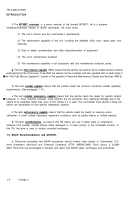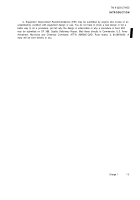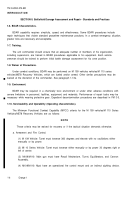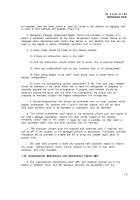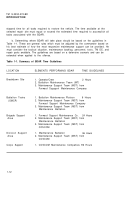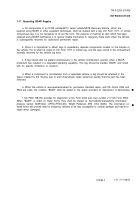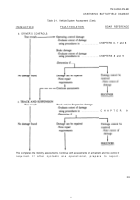TM-9-2350-274-BD - Page 27 of 219
TM 9-2350-274-BD
CHAPTER 2
ASSESSING BATTLEFIELD DAMAG E
BDAR FIXES SHALL BE USED ONLY IN COMBAT
AT THE DISCRETION OF THE COMMANDER
AND SHALL BE REPAIRED BY STANDARD MAINTENANCE PROCEDURES
AS SOON AS PRACTICABLE AFTER THE MISSION IS COMPLETED.
SECTION I. General
2-1. Scope.
This chapter provides guidelines to use to assess battlefield damage to the M 109 Howitzers/M110A2
Howitzers/M578 Recovery Vehicles, It directs you to an expedient repair procedure, or to the standard
■
system TM if an expedient repair procedure for your problem doesn’t exist.
2-2. General.
Use this TM in conjunction with the vehicle’s Technical Manuals (TM) and Lubrication Order (LO),
This chapter explains how to use this manual to assess and fix battlefield damage that prevents the M 109
■
Howitzers/M110 series Howitzers/M578 Recovery Vehicles from moving, shooting, and/or communicat-
■
ing. This chapter contains the general fault assessment tables, general troubleshooting and maintenance
instructions including battlefield damage assessment/repair forms. General fault assessment tables, specific
fault assessment tables, and detailed assessment procedures are used to locate the damage; and an
expedient repair procedure tells how to fix the damage. An index of the expedient repair procedures is
located in each chapter. If you don’t know or aren’t sure of exactly what your problem is, you should use
the assessment tables and procedures to find the fault.
2-3. Application.
Use the following steps to find and fix battlefield damages:
a. Do the Preventive Maintenance Checks and Services (PMCS) in the TM and LO. At the same time
look for obvious damage to the vehicle.
b. If applicable, do the troubleshooting/repair recommended in the TM.
c. If you find the problem, determine its effect on the operation (mobility, firepower, or communica-
tion) of the vehicle.
Change 1
2-1
Back to Top

